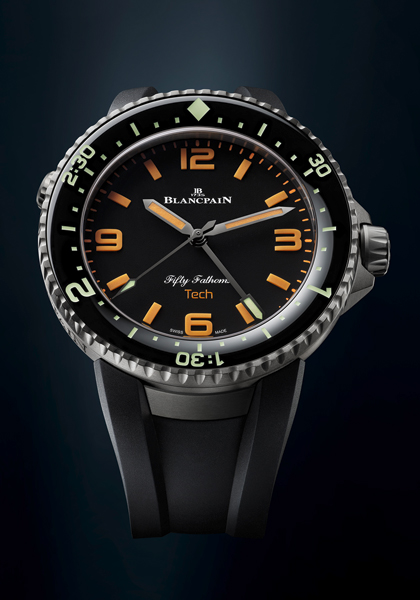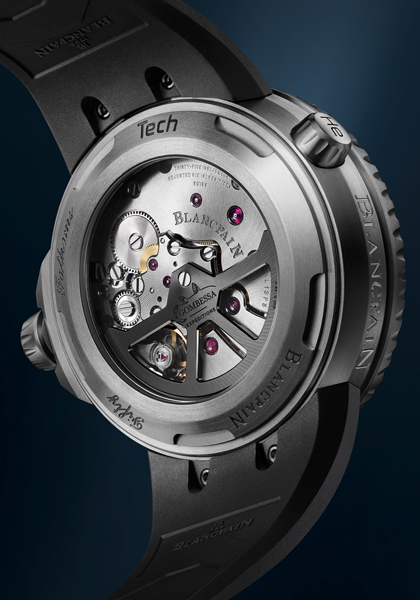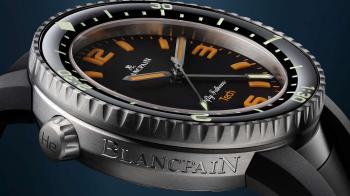In terms of technology, mechanical diving watches haven’t changed a whole lot since the 1950s. The uni-directional bezel, counting down an hour under the water, remains the gold standard indication as a backup tool for professional and recreational divers alike.
When One Hour is Not Enough
Not everyone dives for an hour, however, especially not Laurent Ballesta, the marine biologist and underwater photographer who has been working with Blancpain on numerous research projects over the last decade. Ballesta uses a closed-circuit rebreather system that removes the carbon dioxide from the exhaled air and adds fresh oxygen to the breathing mixture. This air-recycling system not only permits him and his team to stay under the water far longer, but it also produces far fewer bubbles in the water, allowing him to get closer to marine life without scaring them.
A Three-Hour Countdown
When Blancpain approached Ballesta for ideas about how to better adapt the Fifty Fathoms model for contemporary diving, he suggested increasing this one-hour window to three hours by using an additional hand, like on a GMT timepiece. It took five years of research and development to perfect the complication, fine-tune the design, and most importantly, carry out real-life testing of the watch underwater.

New Diving Features
At first, the Blancpain Fifty Fathoms Tech looks similar to other timepieces in the Fifty Fathoms line, but a closer inspection reveals a number of differences. The first is a three-hour uni-directional bezel which is read via an additional hand that makes one rotation in three hours. Markings on the bezel clearly count down the time, so there are no risks of misreading.
The case comes in grade 23 titanium, the most non-allergenic of all the titanium grades (and the one used for medical prostheses), while the black dial has been made to absorb 97% of the light, thus improving contrast with the Super-LumiNova-enhanced hands and numerals. A keen eye will also notice that the lugs have gone, allowing Blancpain to increase the diameter of the watch, but keep the comfort on the wrist while diving.
The Question of Helium
Another new feature for this timepiece is a helium release valve. Most recreational divers do not need this, and it has been previously absent from the collection for this reason. But now that this watch is targeted at professional and saturation divers, who spend extended periods of time working in helium-rich environments, such as in saturation diving chambers, it became an important addition to the three-hour countdown timer.

The Mokarran Protection Society
One place that Ballesta has been testing the timepiece is in French Polynesia thanks to a partnership with the Mokarran Protection Society. This non-profit association was founded in 2019 to study and protect the Great Hammerhead Shark, a critically-endangered species. The organization is based in Rangiroa, the second largest atoll in the world, where two passes regulate the flows of water entering and exiting the lagoon. The Tiputa pass is a particularly favourable place to observe these creatures in the wild and better understand their behaviour in order to protect them.
The project appealed to Ballesta for its scientific mystery, the diving challenge it presented, and also the opportunity it provided to take spectacular images of the hammerhead sharks (hopefully of the watch too)!
At WorldTempus, we are looking forward to following the project soon and also getting our hands on the diving gloves on the watch! Stay tuned!





